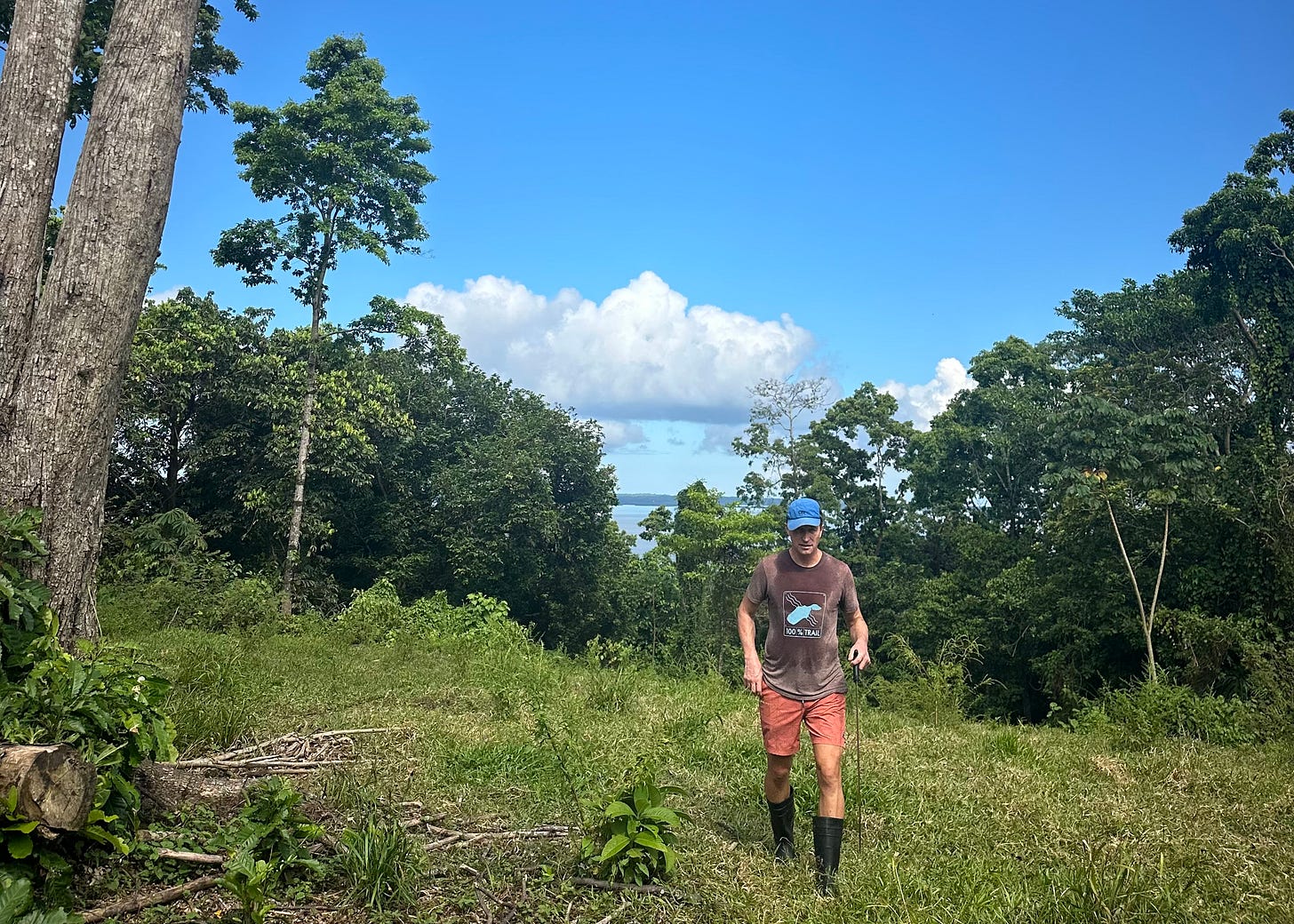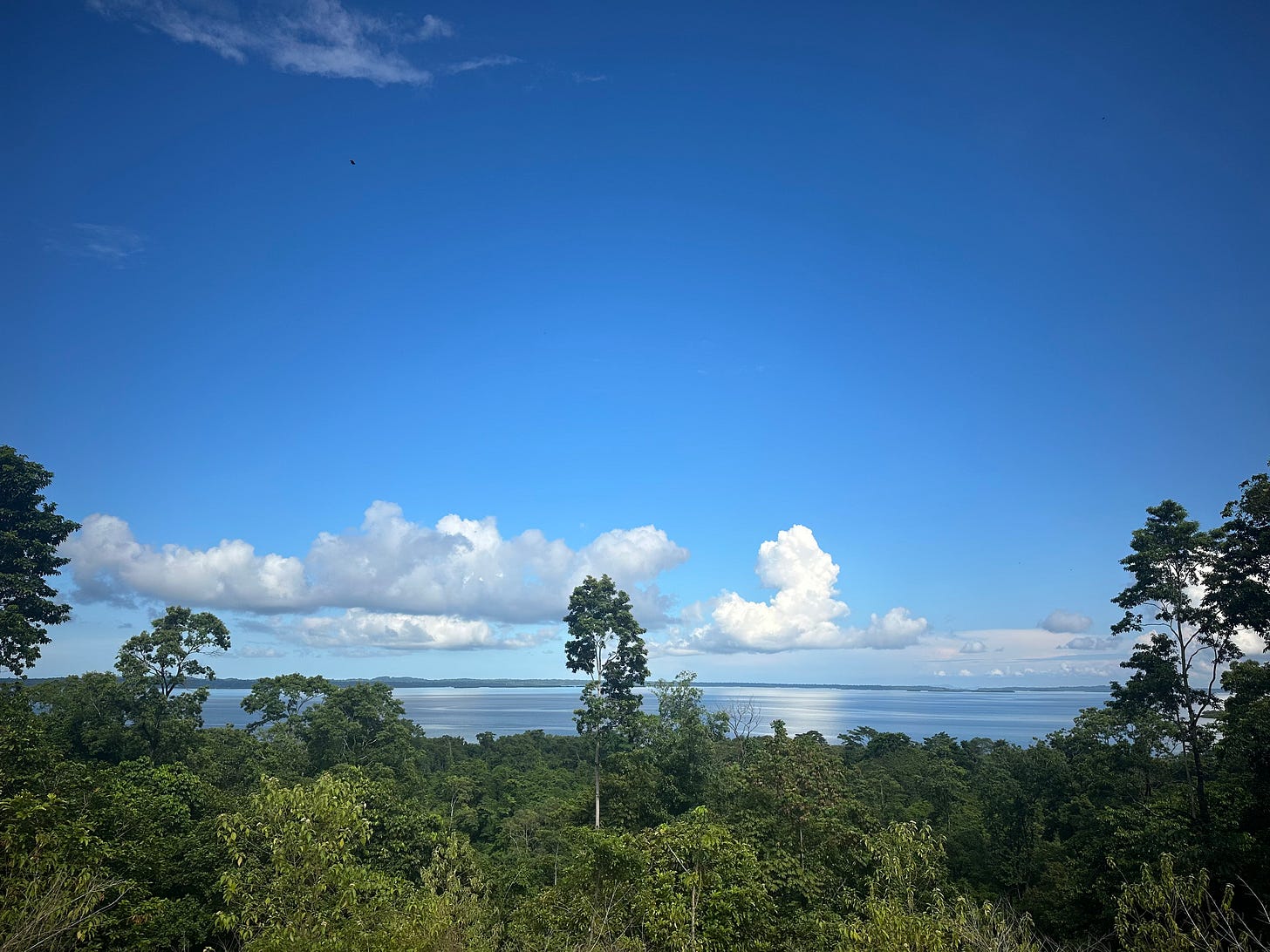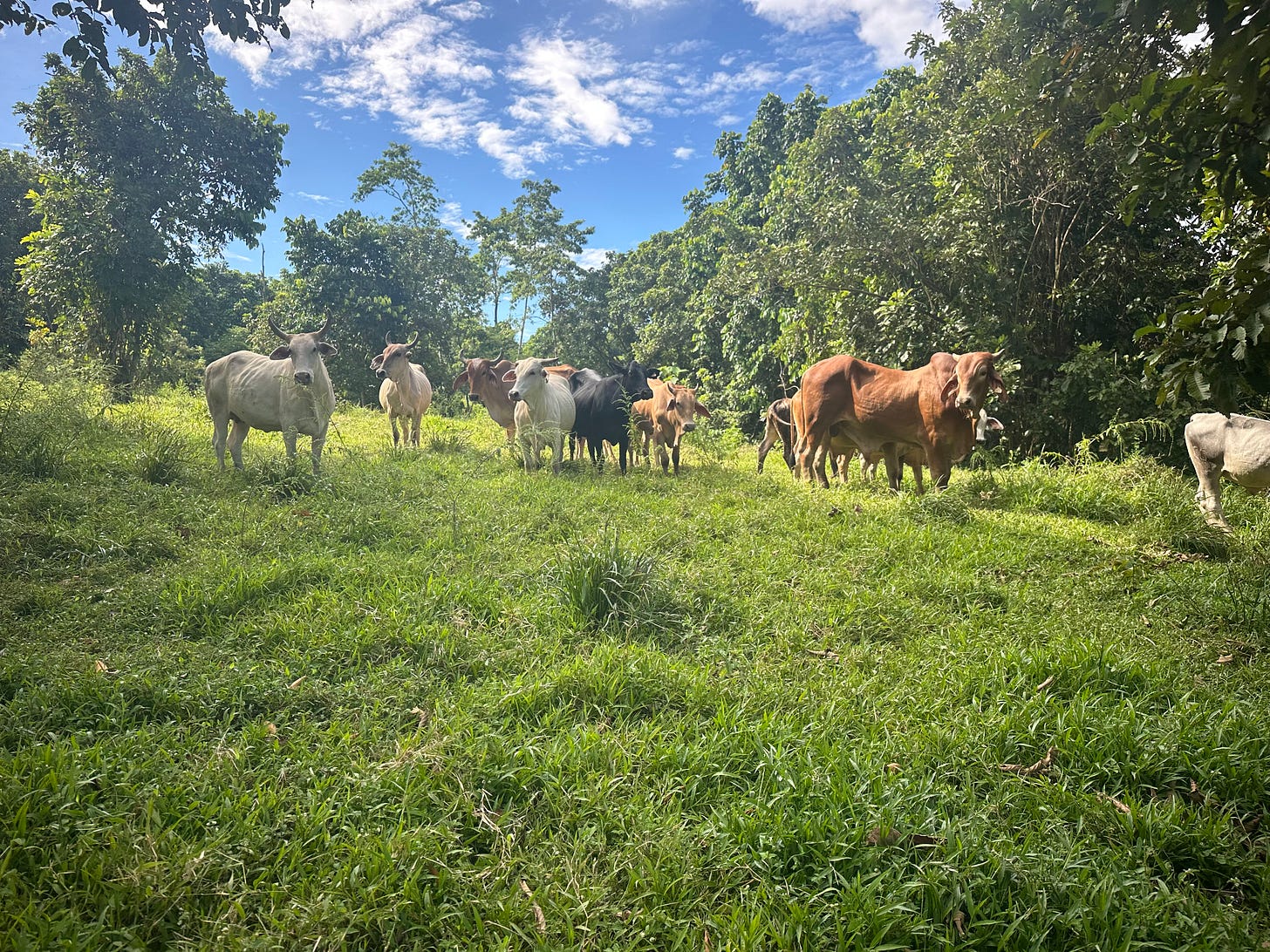They Are Born with Machetes
Working with Ngäbe-Buglé Indigenous People in Panama.
They are born with machetes, Chad says. Yes, I agree. The local Ngäbe indigenous people are masters of the tool. They can cut a trail through the jungle, Chad says, to the plot of land you want to check out. That would help me, I say. I need to understand the true distance of the path I will need to build from the water.
The finca - a plot of land - is on San Cristobal, one of the nine large, inhabited islands comprising the Bocas Del Toro archipelago. There are hundreds more, but the small islands, if inhabited at all, may only have a native cabin or an expat house. Each of the larger islands has a couple of native villages of Ngäbe-Buglé (pronounced Nobi-Booglé) people, and hamlets of expats sprinkled throughout. San Cristobal, named after the island, is the largest village on the islands, with about a thousand people, a school, and volleyball, baseball, and futbol teams.
You will have to pay them for a day of work, Chad says. Of course. They can cut a path through the jungle thickness in a day, which would take me a week on my own. It is an easy decision. Christian and Munique will start in the morning. They are local workers and cousins, from San Cristobal village on the other side of the hills, less than two miles away. I will join them at one in the afternoon, once my real job lets me out.
After my morning online meetings, Alex and I ride our dinghy across the two miles of the bay between the islands from Isla Colon to San Cristobal. October is a calm month in Panama with lower winds and flat seas. Our trip is fast, across the surface that is rarely smooth. We tie up the boat at a friend’s dock and meander the paths to find Christian and Munique. I only have a vague idea where they may be. I listen for the hacking machetes, but the hill is too vast and the jungle swallows all noise, besides the birds in the neighboring trees and the distant howls of the monkeys.
We find them at the top, in the clearing. They are in the shade of a tree, drinking water from a one-gallon plastic bottle. It is hot in the sun, humid, scorching without a breeze. We walk to meet them. I am in the lead, pushing the thigh-high grass apart with my machete, one step at a time. In the clearings between the thick jungle, in the tall grass, is where Fer-de-Lances like to coil, the local killer snakes. Walking slowly is a prudent precaution.
How is it going, I ask. They nod, and Christian wonders if I have a file to sharpen his machete. Not with me, but looks like you are done. He says that they can keep cutting to the other side of the hill. But, I say, you have done enough.
He speaks a slower Spanish and is easy to understand. Maybe it is his way, or maybe he is used to working with the semi-proficient gringos. Alex and I, I say, will walk and measure the distance to the dock along the path you have cut, but will be back in thirty minutes. He nods.
The indigenous people lived on the island before the first European contact in the 1500s. How long exactly is unknown, but the archeological and linguistic evidence suggests they settled the archipelago 800-1000 years ago, using the islands seasonally for fishing, gathering, and small farming. The arrival of banana companies shook their lives over a hundred years ago, then the arrival of tourists and expats delivered another perturbation. Today, the villages are an incongruous amalgam of traditional ways, cellphones, dug-out canoes - cayocos, and Yamaha-powered fiberglass boats - pangas. The old and the new: traditional dresses and Rolling Stones t-shirts, machetes and chainsaws, oral Ngäbe traditions and Starlink satellites.
Christian and Munique are back in the same spot when we return after walking a mile and climbing the steep slopes of the hill. We rest under the tree, all of us turned towards the breathtaking view. Across the expanse of the water are Solarte and Bastimentos. The two hilly islands compress the bay into a mile-wide channel and push it against the smaller Carenero island. Sparse red roofs of homes, shrunken by distance, dot the coastline. A denser settlement of Old Bank is a splash of color against the green. Through the channel is the Caribbean Sea and a wide expanse of warm water extending directly north. On the other side of it are the Cayman Islands, Jamaica, and Cuba, where we sailed from a few months ago. Eight hundred miles away, or eight days at sea.
I show Christian the survey map on my phone. Can we see these plots as well, I ask him. He is the older of the two, twenty-four, and does all the talking. Munique is not yet twenty. He is quiet. Christian nods and points in the direction slightly off from where I would have gone, then leads us. We cross a fence, and the grass turns short. Why? It is pasture, Christian explains. The cows keep the grass short. He points to large cow pies, taller and denser piles distinct from the flat pancake pies of the American cows. Whose cows? Nobody knows, Christian says, jungle cows. Used to be somebody’s, but the person is gone.
We see the herd across a ravine. Ten or fifteen heads of cattle: heifers, juveniles, and the bull. Christian picks up a large stick and cuts it with his machete to the size he wants, and carries it with him. We cross the shallow ravine, then Christian turns to walk along the top of the hill, parallel to the herd. The bull is nonplussed. He takes the point at the head of the herd and slowly intercepts our path, makes noises. I don’t like his tone. Neither does Christian. He points the stick at the bull and shoos him away. The bull stops the advance and walks parallel to us. The herd follows. Are we fine, Christian? He nods.
The other plots are beautiful, too. Alex prefers the first of the two with its expansive views and the breeze. The breeze is key for a house out here. There is no infrastructure of any kind on San Cristobal; each house must be off-grid. But it is easy to do here: the solar panels are cheap and the lithium batteries are affordable. Each house has a rainwater catchment system that fills up the tanks after a few hours of frequent tropical rains. But it helps to avoid air-conditioning. The air-conditioning is a power hog and destroys the hard-earned acclimatization to the tropical heat and humidity. The open windows with a breeze are enough. Most homes here do not have glass windows, just screens to keep chitras away.
We walk down the hill to check the distance to the mangroves below. A half-mile, I guess, but better be sure. Christian, do you have kids, I ask. Yes, one. It is enough, too many kids as it is, and kids take much time and are becoming expensive. Do most villagers still have many children, I ask. Some, but fewer now. People still have them young, but not as many as ten years ago, he says. Did you build your own house, I ask. Yes, with my brothers and cousins and my parents. We cut the wood from our jungle and shaped it into planks with a chainsaw. I have seen the Ngäbe Indians cut the trees into two-by-six planks with chainsaws, right in the jungle where they have felled them. The precision and straightness of the planks would blow your mind.
We used nespero and almendra trees before, Christian says, but now we can’t cut them without a permit, so we use other wood. Nespero is a beautiful local tree with woven trunks as if braided from smooth ropes. Almendras are the giants of the jungle, with extremely hard wood. It is prized for that - the wood is too hard for the termites.
Christian, are people leaving the village? We are slugging through a creek, and the mud holds our boots then releases them with a sucking sound. He can’t hear me through the steps. Are people leaving the village, I ask again. Yes, but they are not going far, just to the next island. They work construction jobs on Isla Colón. They are building hostels and Inns for the tourists, and homes for the expats. The villagers there build their own homes. Christian, have you traveled to other parts of Panama? He nods.
Two horses trot out of the shade and follow us. The mare is small, the stallion is larger but still small, yet aggressive. He charges us, changes direction after Christian shakes his stick, then circles back to the mare. Are these jungle horses, as well, I joke. Christian nods. Yes, there was a gringo, some Austrian or German, who did horse riding tours in the island jungle, but he left recently after he grew too old. The horses are still here.
At first, I feel sad, but then I see the horses’ healthy coats and fit frames, and I look at the vast pasture they made their own, where they gallop or trot as they please, without obligations to an owner, and I realize the old age of the gringo and his return home was his greatest gift to these two. Only two horses, I ask Christian. No, there are more.
We walk a quarter mile through the pasture, then stop at the cow corral. It is old, disused, but still standing, built of the local hardwood. We lean on the planks to rest and look over the water. Beautiful. Peaceful. Free of the hurry, of naked ambition and greed.
Christian, will you also leave someday? No, it is a good life. Tranquillo. I like my people.
I look at him and feel something uncertain. At first, I feel sad that his entire life will be on this one island. But then I realize I feel a tinge of jealousy. It took me thirty adult years to understand I was chasing the wrong thing, then to come to this stunning place to find peace. Yet, he is only twenty-four, and he is already here. No, not here as in this place, but a state of mind, where peaceful life with the people he likes is the most worthy ambition.






Always a pleasure to explore with you two...definitely the road less traveled by and well depicted. Congratulations on you finding that peaceful goal, even if it took 30 adult years. Most folks never do. J
Nicely written, Egor. I have a clear image of the island and of Christian. I've worked with people from quiet rural areas like that.